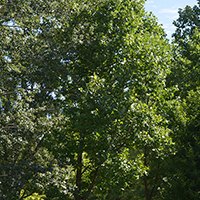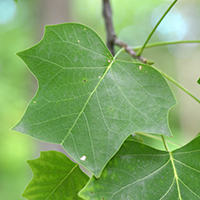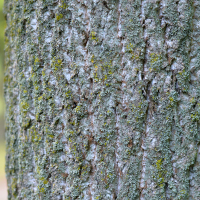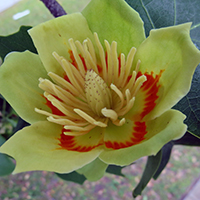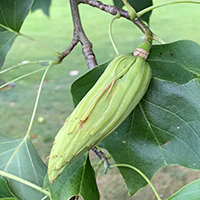What tulip trees look like
Size and shape
- Large, fast-growing tree.
- Reaches 25 to 35 metres in height.
- Trunk reaches 50 to 160 centimetres in diameter.
Leaves
- Light green leaves that turn yellow in the fall.
- 7 to 12 centimetres long.
- Flat across the top with 4 pointed lobes along the bottom.
Bark
- Bark is smooth and dark green on young trees.
- Bark on mature trees is brown and has ridges.
Flowers
- Yellow-green and orange flowers.
- About 5 centimetres long.
- 6 petals that are shaped and arranged like tulip flowers.
- Bloom in spring.
Fruit
- Cone shaped fruit contain many seeds.
- Seeds are winged.
Where tulip trees are found
Tulip trees grow in only a few areas of Southern Ontario — along the south shore of Lake Huron, along the north shore of Lake Erie and in the Niagara Peninsula.
What you need to know to grow tulip trees
- Moisture: need a lot of moisture during summer.
- Soil: grow best in sand and sandy loam.
- Shade: need full sun.
- Cautions: tulip trees need deep, rich, moist soil. They are fast-growing with roots that grow deep and spread widely.
Benefits and uses of tulip trees
Wildlife benefits
Tulip tree seeds are a food source for birds and small mammals.
Commercial uses
The wood from tulip trees is used for:
- furniture, including cabinets
- veneer
- caskets
- pulp
Fun facts about tulip trees
- Tulip trees are named for their tulip-shaped flowers.
- Tulip trees begin flowering after they are 15 years old.
- This species is fast-growing and, under ideal conditions, long-lived.
Updated: January 10, 2024
Published: July 18, 2014
